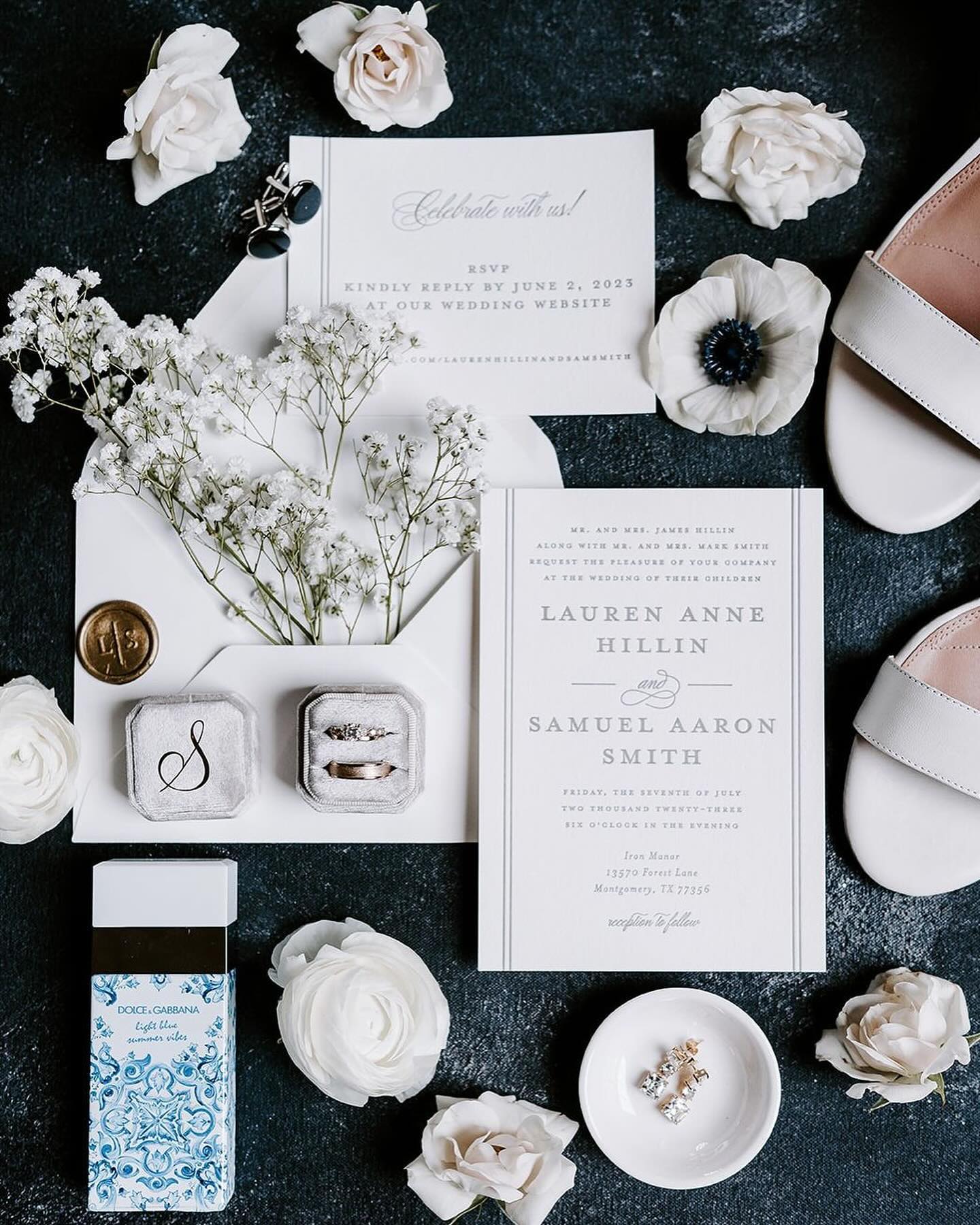Planning a wedding is exciting, but it can also feel overwhelming. You're juggling guest lists, choosing color schemes, and trying to figure out if you really need that chocolate fountain. (Spoiler: you probably don't.) The key to keeping your sanity? A solid wedding budget plan.
Whether you're working with $5,000 or $50,000, your budget will be your guide to creating a day that's uniquely you. With some creative thinking and smart planning, you can have a day that's both beautiful and budget-friendly. Let’s do this!
Taking stock of your wedding finances
Let's talk wedding dollars and sense. The big-ticket items typically monopolizing your budget are catering, venue, and photography/videography. But before we get into a breakdown of just how much you should budget for each of those things, we’ll share our most important tip: when it comes to spending, it’s your wedding, your rules.
Maybe you're all about that picture-perfect venue, or perhaps you're dreaming of a feast your guests will rave about for years. Whatever your priorities, feel free to shuffle those budget percentages around. Just remember, when you bump up one category, you'll need to trim another to keep your overall budget in check.
The real talk on wedding costs: What to expect
Let's pull back the curtain on wedding costs for 2025-2026. Grab a comfy seat — we're about to dive into the nitty-gritty of where your money's likely to go:
- The average budget for a wedding in 2025 is $36,000. This number varies wildly depending on location, from a whopping $70,625 in Washington D.C. to a more modest $12,500 in Alaska.
- Venue, catering, and photography typically eat up about 50% of budgets, with venue and catering specifically costing couples anywhere from $5,000 to $15,000.
- Factor in $400 to $700 for invitations. This often-overlooked expense can catch couples off guard. (For more info on what can impact the cost of wedding invitations, check out our full guide to how much wedding invitations cost in 2025.)
- Set aside $2,000 to $4,000 for flowers and $1,500 to $3,000 for your wedding dress.
Pro Tip: In-season flowers can help keep costs down.

Photo by Lindzy Nava
Money conversations made easy
Ready to tackle the elephant in the room? Talking about wedding finances can feel as daunting as choosing your first dance song. But don't worry – you've got this! The secret? Approach these chats as a team. Start with open questions like "What matters most to you for our big day?" This sets the stage for a productive dialogue about priorities and spending.
When it comes to family contributions, timing is everything. About 34% of weddings are fully funded by couples themselves, but if your folks want to chip in, it's best to know early. Have a casual conversation with family members to understand their plans. Keep it relaxed – maybe over coffee or during a family dinner.
Remember, it's okay to set boundaries, too. It’s all about your vision – even when it comes to who's footing the bill.
Creating your wedding budget roadmap
Now that you've got the big picture of wedding costs, let's zoom in on turning those numbers into an actionable plan that works for your love story. No cookie-cutter budgets here!
Map your money journey
- Create a timeline-based savings plan: Match your budget to your engagement length — monthly targets for a year-long engagement or accelerated savings for a six-month countdown.
- Divide your engagement into financial phases: Think early months for researching and booking big-ticket vendors, middle months for medium expenses like invitations and decor, and final stretch for last-minute details.
- Play the "must-have, nice-to-have, can live without" game: Create a list of all of the wedding elements you can think of (from big-ticket items like a videographer to small details like envelope liners). Then, sit down with your partner and have each of you rank every wedding element independently, then compare notes — where you match on "must-haves" is where your money goes first!
- Factor in your wedding's unique flair: Destination wedding? Holiday date? Sunday brunch affair? Each choice creates its own budget ripple effect.

Photo by Sofia Theresa Photo
Translate priorities into percentages
Once you've identified what matters most, customize those standard budget percentages we mentioned earlier. Try this formula:
- Top priority items: Add 5-10% above the average allocation.
- Middle-ground elements: Keep at industry-standard percentages.
- Low-priority aspects: Reduce by 5-10% to compensate.
This approach ensures your money flows toward what will actually make your hearts happy, not what the wedding industry dictates. Just make sure the math still adds up to 100%!
Build your budget command center
Wedding planning generates paperwork like confetti! Create your organization system early:
- Digital devotees: Try collaborative tools like Notion or Airtable that combine budgeting with vendor contact info, inspiration photos, and timeline tracking in one place.
- Visual planners: Set up a digital dashboard with color-coded spending categories and progress thermometers toward savings goals.
- Detail lovers: Use "actual vs. estimated" tracking to catch where you may be overspending before it becomes a budget disaster.
Consider setting up a dedicated wedding email address and separate checking account to keep all those deposits, receipts, and vendor communications in one place. Future-you will be eternally grateful when tax season rolls around!
Schedule bi-weekly "budget check-ins" with mini-celebrations when you hit savings goals or find clever ways to cut costs. Did you score those centerpiece vases at 40% off? That calls for a celebratory dance party (or at least a high five)!
Wedding budget checklist
Ready for action? Here's your grab-and-go checklist to keep your wedding finances on track from "Yes!" to "I do!":
- Months 1-2 of wedding planning: Determine your total budget number and who's contributing what (get those awkward money talks out of the way early!)
- Months 2-3 of wedding planning: Create your budget breakdown by category — but leave wiggle room to account for vendors or details being slightly more expensive than you anticipated.
- Before booking ANYTHING: Set up your tracking system and establish a "contract review" process (aka, actually reading the fine print before signing!).
- With each vendor: Clarify exactly what's included, what costs extra, and get ALL fees in writing — those "small" add-ons have magical multiplying powers.
- Monthly: Schedule "budget date nights" to review spending and adjust as needed (wine recommended, but optional).
- After bookings: Create a payment timeline calendar with every deposit and final payment date — nothing kills the pre-wedding vibe like a surprise payment due email.
- 3-6 months before the big day: Review your "wishlist" items and decide what actually fits in the remaining budget (hopefully you won’t have to say goodbye to those custom cocktail napkins)
- 1 month before: Prepare tips and final payments in labeled envelopes for your wedding day — future you will thank past you for this organization.
- Post-wedding: Reconcile any final expenses and close out your wedding accounts—then celebrate being budget masters before tackling your next financial adventure together!
Your wedding budget isn't just a spreadsheet — it's the blueprint for your first major project as a team. The financial clarity you're building now? That's the foundation for your happily ever after!
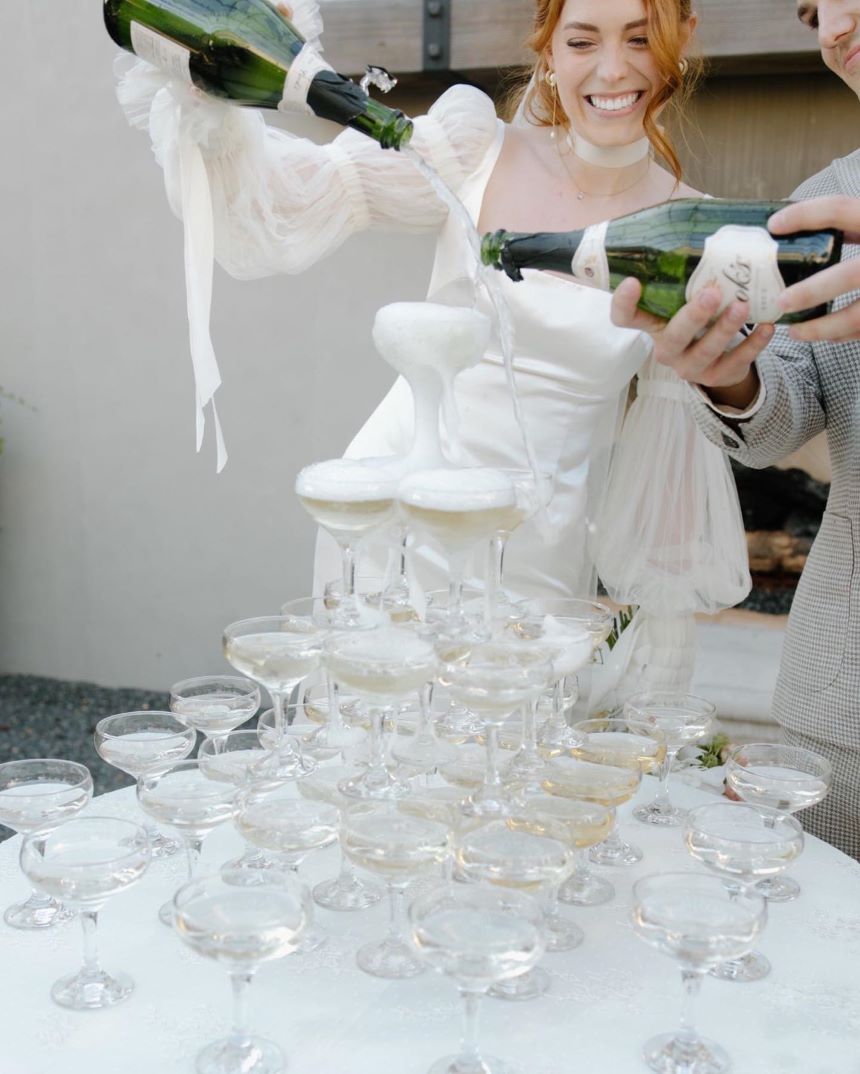
Photo by Leah Gunn Photography
Smart saving strategies
The best budget-savvy couples think like producers, not consumers. Instead of asking "what can we buy?" they ask "what experience do we want to create?" This mindset shift often leads to creative solutions that actually feel more personal than expensive alternatives.
Consider the "peak-end rule" – psychological research shows guests primarily remember the high points and the conclusion of experiences. Invest in creating 2-3 standout moments (like a surprise musical performance or dramatic entrance) and a memorable send-off, while keeping other elements simpler.
Where to cut costs creatively
Ready to trim your wedding budget without losing the magic? Try these clever tricks to save big while still wowing your guests:
- Go hybrid with your bar: Offer a signature cocktail, wine, and beer instead of a full open bar – it's festive without the premium price tag.
- Rethink "wedding" vendors: Book photographers during their "portrait session" rates for smaller weddings, or hire culinary students from local cooking schools for appetizers.
- Use lighting as decor: String lights, uplighting, and candles create ambiance for a fraction of floral costs – bonus: they photograph beautifully.
- Embrace breakfast or lunch: Daytime receptions can cut catering costs by 30% or more, plus guests typically drink less earlier in the day.
- Consider a statement backdrop: One stunning focal point (like a flower wall behind your sweetheart table) creates high visual impact while allowing you to minimize decor elsewhere.
- Shop mainstream retailers for bridesmaids: Fashion-forward stores like Banana Republic and J.Crew offer wedding-worthy styles without the "bridesmaid dress" markup.
- Repurpose ceremony decor: Design your ceremony flowers to be easily moved to reception tables or the cake table afterward – double-duty decor at its finest.
- Create a "honeyfund" registry: Let guests contribute to experiences rather than buying physical gifts – many will give more generously to a dream honeymoon fund.
- Book vendors who bundle: Photographers who include engagement sessions, DJs who provide ceremony sound, or alternative venues with in-house catering often offer package discounts.
Finding your perfect number of guests
Your guest count significantly impacts every aspect of your wedding budget. Each "yes" RSVP adds to your catering, seating, and favor costs, so don't be shy about wielding that red pen on your invite list!
- Create celebration tiers: Design a micro-ceremony with 30 VIPs, followed by a reception for 75, and an after-party for 125+ (the later the event portion, the less formal and expensive).
- Use the "one year" filter: Ask yourself if you've spoken to this person in the past year – if not, they might not be essential to your celebration.
- Consider the "family sponsorship" approach: Frame additional guests as "hosted tables." So, when your dad asks if he can invite his work buddies, respond with something like, “We'd love to include your business colleagues if you'd like to host their table."
- Be consistent with plus-ones: Create a clear policy (like "engaged/married partners only" or "together over one year") to avoid awkward explanations.
Pro Tip: for every 10 guests you trim, you could save enough for that photo booth you've been eyeing. Now that's a picture-perfect trade-off!
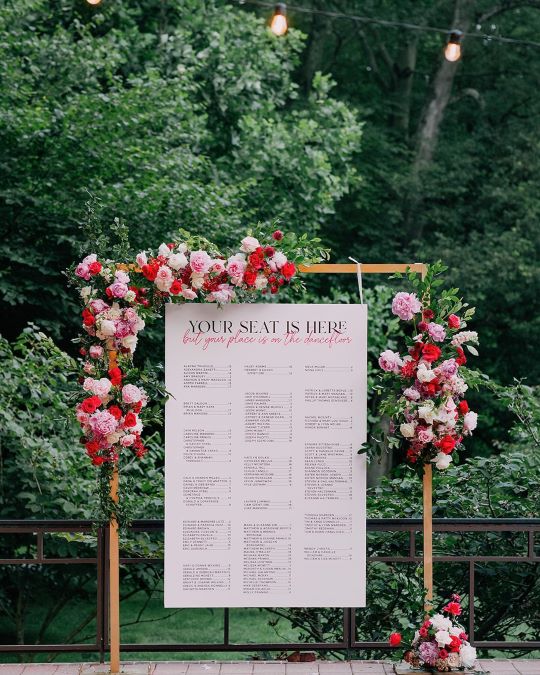
Photo by Hannah Snyder Weddings
Budget-friendly wedding dates
The wedding industry has predictable peaks and valleys throughout the year – savvy couples can leverage this rhythm to their advantage. What makes this timing strategy especially powerful is that guests rarely know or care if you selected your wedding date for budget reasons.
- Target holiday adjacencies: The Thursday before a holiday weekend often prices like a weekday but functions like a weekend.
- Look for "short-booking" discounts: Many venues offer 30-50% off for dates within 3-6 months.
- Consider the full wedding weekend: Off-peak timing means more vendor availability and more affordable guest accommodations.
- Ask about seasonal incentives: Venues in tropical locations slash prices during technically "rainy" seasons that often still have plenty of perfect days.
Strategic splurging
Smart couples use what we call the 80/20 rule for wedding budgets: put most of your money (about 80%) toward the few things (about 20%) that really matter to you both.
Think about it: Five years from now, will you remember those fancy napkins you upgraded? Probably not. But you'll definitely remember the look on your grandma's face when she tasted that special dish inspired by her home cooking, or how it felt when the string quartet orchestrated your procession up the aisle.
Spend big on the stuff that gives you all the feels, and go budget-friendly on the rest!
Moments where big impact meets budget
The most memorable weddings feature strategic "peak moments" – carefully crafted experiences that become the emotional anchors of your celebration. These high-impact elements often cost less than you might expect when compared to across-the-board upgrades.
Thoughtful touches like ceremony programs with built-in fans for summer weddings, pashminas for chilly evenings, or comfortable seating during cocktail hour rarely break the budget but generate tremendous goodwill.
Identify your "sensory priorities" as a couple. Let them guide your biggest investments.
- Are you foodies who value taste above all?
- Music lovers who need exceptional sound?
- Visual people who prioritize aesthetics?
For food-focused couples, an interactive chef's station might create more impact than premium linens that few will notice. Whereas those upgraded linens may be worth the splurge for couples who prioritize aesthetics.

Photo by Tosh Muniz
Photography
Most couples put about 10-12% of their budget toward capturing their big day, and honestly? It's money well spent. Your photography budget is one area where the investment continues to deliver value long after your wedding day.
When it comes to getting the most bang for your photography buck, a little strategic planning goes a long way:
- Prioritize skill over extras. Put your money toward photographer talent rather than elaborate packages with albums and prints you can order later.
- Budget for rights to your images. Ensure your package includes digital files with printing rights. This creates significant savings compared to ordering all prints through your photographer.
- Consider scaling coverage hours. Full-day packages are great but pricey — many key moments happen within a 6-8 hour window.
- Consider a "second shooter" approach: Hiring a more junior photographer to cover your getting-ready photos often gives you more comprehensive coverage than upgrading to a pricier primary photographer.
- Harness the power of golden hour: Schedule your portrait session for that magical hour before sunset when everyone looks their absolute best.
- Focus videography on the highlights: A shorter package capturing your ceremony and key reception moments often catches all the magic without the all-day price tag.
Remember, these photos aren't just for your Instagram feed – they're the memories you'll share with kids and grandkids someday. Quality matters more than quantity when it comes to preserving your perfect day!
DIY & Delegation Decisions
DIY has earned its rightful place in modern wedding planning as the perfect middle ground between budget-friendly practicality and heartfelt personalization.
The most successful DIY approach focuses on projects that align with your existing skills or passions. Love to bake? Consider making a huge batch of cookies to use as your wedding favors. Have a green thumb? Potted succulents or herbs make charming centerpieces you can nurture during your engagement.
The key is choosing projects that bring joy rather than stress. Plus, crafting sessions with your partner or wedding party often become cherished pre-wedding memories in themselves, complete with wine, laughter, and the satisfaction of creating something meaningful together.
When to craft and when to hire
Ready to roll up your sleeves for some DIY magic? Not so fast! Before you dive into crafting, take a moment to honestly assess your skills and available time. Simple decor like bud vase centerpieces can slash costs by over 50%, but intricate projects might leave you frazzled instead of fabulous.
Ask yourself these key questions before committing to DIY:
- Do you genuinely enjoy crafting? If creating things brings you stress rather than joy, DIY might not be for you.
- Is your timeline realistic? Most projects take 2-3 times longer than expected, especially when making dozens of identical items.
- Do you have the necessary skills? Some projects require specialized tools or techniques that might cost more to acquire than hiring a pro.
- Will this still feel fun when you're one month from the wedding? Late-stage DIY pressure can quickly turn excitement into anxiety.
- Is there a plan B if things go wrong? Always have a backup option for critical elements.
Come wedding planning season, your time and sanity become precious commodities. Sometimes, investing in ready-made options frees you up to focus on the parts of wedding planning that truly make your heart sing.
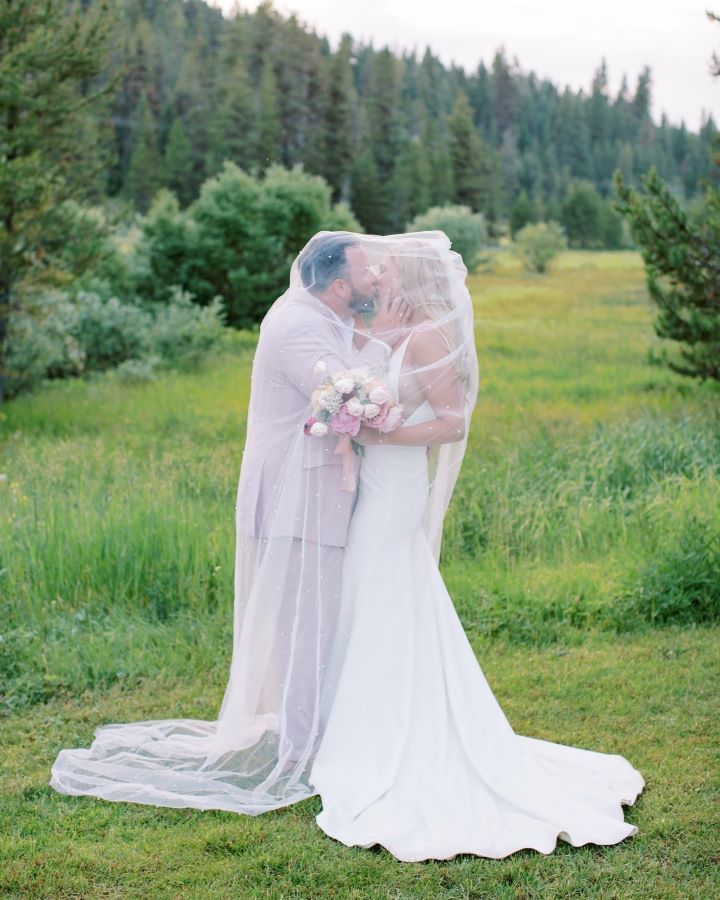
Photo by Anna Pervertaylo Photography
Budget pitfalls & protection
Even the most organized couples encounter budget hiccups along their wedding planning journey. The number one challenge? Death by a thousand paper cuts — those seemingly small expenses that sneak in one by one until they've devoured your carefully planned budget. Combat this by establishing a "splurge agreement" with your partner early on. Each of you gets one or two pre-approved emotional purchases, but additional splurges require a waiting period and mutual agreement.
Budget surprises to avoid
The final invoice arrives and – surprise! – it's significantly higher than the initial quote. This all-too-common scenario often stems from overlooking the fine print that can add 20-30% to your final bill. Here's how to stay ahead of those budget-busters:
- Request all-inclusive quotes: Ask every vendor for itemized quotes that include ALL potential fees, taxes, and service charges before signing contracts.
- Budget for gratuities: Set aside 15-20% for service staff tips (caterers, bartenders, venue coordinators) – these aren't optional and add up quickly.
- Calculate true invitation costs: Factor in postage (heavier invitations = higher postage), return postage for RSVPs, and any necessary rush fees.
- Plan for day-of transportation: Include not just your grand exit vehicle, but transportation between venues and possibly guest shuttles.
- Anticipate alterations: Wedding dress alterations typically cost $300-700 and are rarely included in the dress price.
- Account for trials and tastings: Hair/makeup trials, menu tastings, and cake tastings might carry fees not included in the main service cost.
- Build in that buffer: Set aside 10-15% of your total budget as a contingency fund for unexpected expenses and emergencies.
Digital tools for budget management
The right digital tools can transform wedding budget management from overwhelming to almost enjoyable, helping you track every dollar and identify potential savings opportunities.
- Minted's Wedding Website: Free wedding websites with built-in registry features help organize your planning and reduce paper costs.
- Google Sheets templates: Create customizable wedding budget spreadsheets with built-in formulas that automatically calculate remaining funds.
- Digital payment tracking: Use banking apps with "wedding" labels for all transactions to create an automatic paper trail.
- Virtual wedding timeline tools: Apps like Timeline Genius offer planning checkpoints to ensure you're not missing critical budget items.
- Registry cash fund options: Create funds for experiences or big-ticket items instead of traditional gifts, helping offset honeymoon costs.
- Cloud storage organization: Use Google Drive or Dropbox to store all contracts, quotes, and receipts in one searchable location.
With the right digital tools at your fingertips, you'll spend less time crunching numbers and more time soaking up the joy of wedding planning!
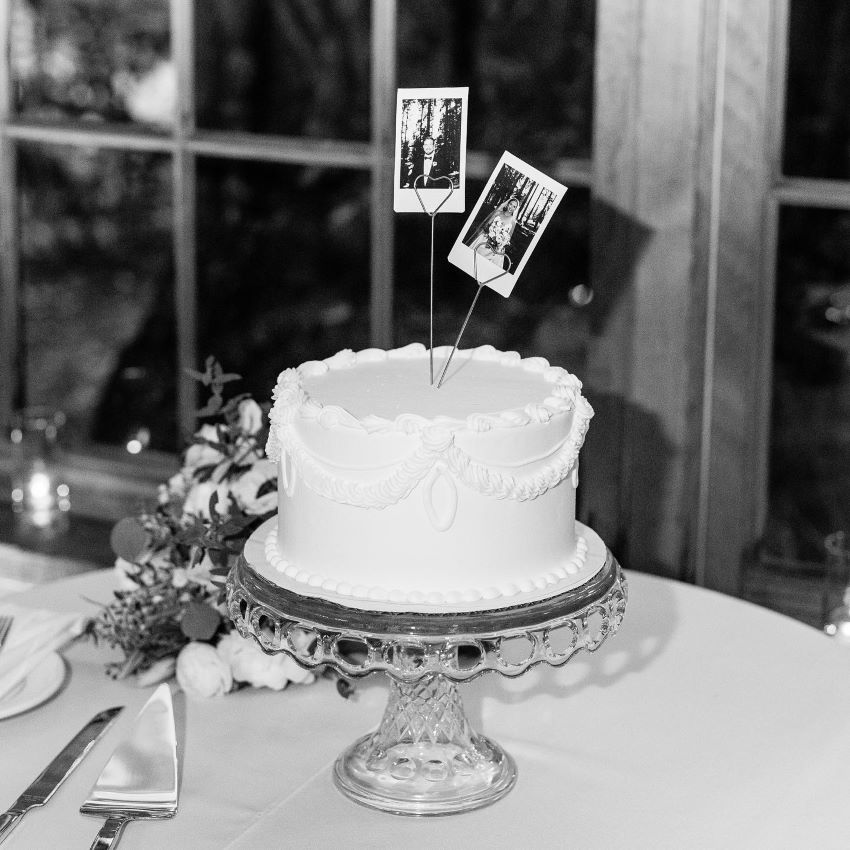
Photo by 1985Luke Photography
Frequently Asked Questions on Wedding Budget Planning
You've got questions, we've got answers! We've rounded up the most common wedding budget dilemmas our Minted couples face and provided straightforward solutions to help your planning journey.
How much should we budget for our wedding?
Your budget should reflect your unique circumstances and priorities. Start by determining how much you can comfortably afford, considering savings and any family contributions. Beautiful weddings happen at every price point!
Who traditionally pays for what in a wedding?
Traditions vary widely, but open communication with all potential contributors early in the planning process is key. Discuss expectations and be clear about your overall vision.
How can we avoid going over budget?
Track every expense in a detailed spreadsheet or wedding planning app. Build in a 5-10% buffer for unexpected costs. Prioritize your must-haves and be willing to compromise on less important elements. Consider off-peak dates or weekday celebrations for significant savings.
What's the best way to negotiate with vendors?
Do your research to understand typical costs in your area. Ask about package deals or off-season discounts. Be clear about your budget upfront, and don't be afraid to respectfully ask if there's any wiggle room on pricing.
Should we take out a loan to pay for our wedding?
Consider alternatives first. Extend your engagement to allow more time to save, or look for creative ways to cut costs. Starting your marriage without debt can set you up for financial success.
How do we handle budget conversations with family members who want to contribute?
Have these talks early, listen to their input, but set boundaries if needed. If they're contributing financially, discuss whether that comes with any expectations about decision-making. Keep the conversation positive and focused on creating a day that reflects your love story.
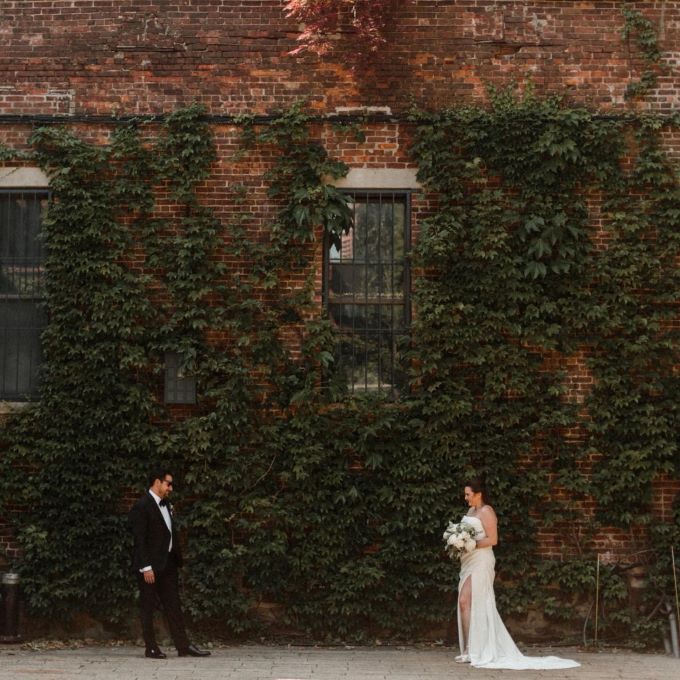
Photo by The Stewarts Roam
What expenses do most couples forget to include in their wedding budget?
Don't overlook gratuities, which can add up to 10-20% for various vendors. Other often-overlooked costs include alterations, postage for invitations, marriage license fees, and vendor meals. Factor in a contingency fund for these unexpected expenses!
How do we prioritize what's most important in our budget?
Sit down together and each list your top three non-negotiables. Allocate a larger percentage of your budget to these priorities, and look for ways to save on less important elements.
What hidden fees should we watch out for in vendor contracts?
Always read the fine print! Common additional charges include overtime fees, cake-cutting costs, corkage fees for your own alcohol, and setup/breakdown expenses. Ask vendors about any potential extra charges upfront.
How can we create a luxury feel on a limited budget?
Focus on high-impact elements: splurge on a statement piece like a stunning cake or ceremony backdrop. Choose quality over quantity with flowers, opting for a few showstopping arrangements. Use lighting creatively – fairy lights or candles can transform a space inexpensively.
Celebrating Your Way: Style Without Sacrifice
Your dream celebration isn't about the investment — it's about honoring your love story in a way that feels authentically you. No matter your budget, focusing on what matters most creates a day filled with joy and meaning. All it needs is clever choices and personal touches.
From stunning customizable invitations to expert planning tools, Minted is here to help bring your vision to life without compromising your financial goals. Turn your wedding dreams into reality — browse our customizable designs today.




